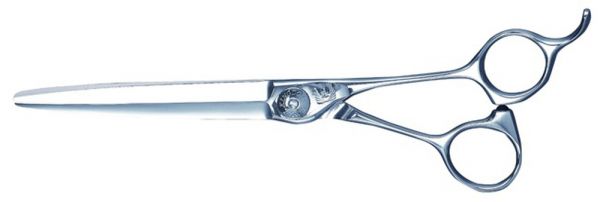Naruto Daitack - II Hair Cutting Scissor
Naruto Daitack ll Hair Cutting scissor 6.5 inches an advanced tool with sword blade is a true hair cutting experience. Designed with Sintered Powered Cobalt Alloy steel, and super convex edge to give the smoothest cut possible. Workmanship and finish work are breath taking, and this is accomplished by experienced artisans who are dedicated to achieve simply the finest hair cutting tools made in the world, second to none. The Daitack II contains a closed sealed type bearing that will enhance the stability and opening and closing of the shear, and also has a shaft bearing to reduce friction and thumb pressure required to cut. Naruto Daitack II is suitable for barber and all types of cutting. Naruto Scissors are have dedicated to such an extreme that their products and scissors are the only scissor or shear in the world that is over engineered beyond its intended purpose of simply cutting hair. A Naruto Shear is heirloom quality, and stylists who have taken the step in to Naruto hair cutting experience often find themselves wanting another one. Contact us and let us help you have a Naruto scissor custom made just for you. All Naruto Scissors include Free Name engraving in several fonts at no charge. Every Naruto Scissor has our highest possible Recommendation worth the investment. Use our Lay Away Program to order yours today.




























